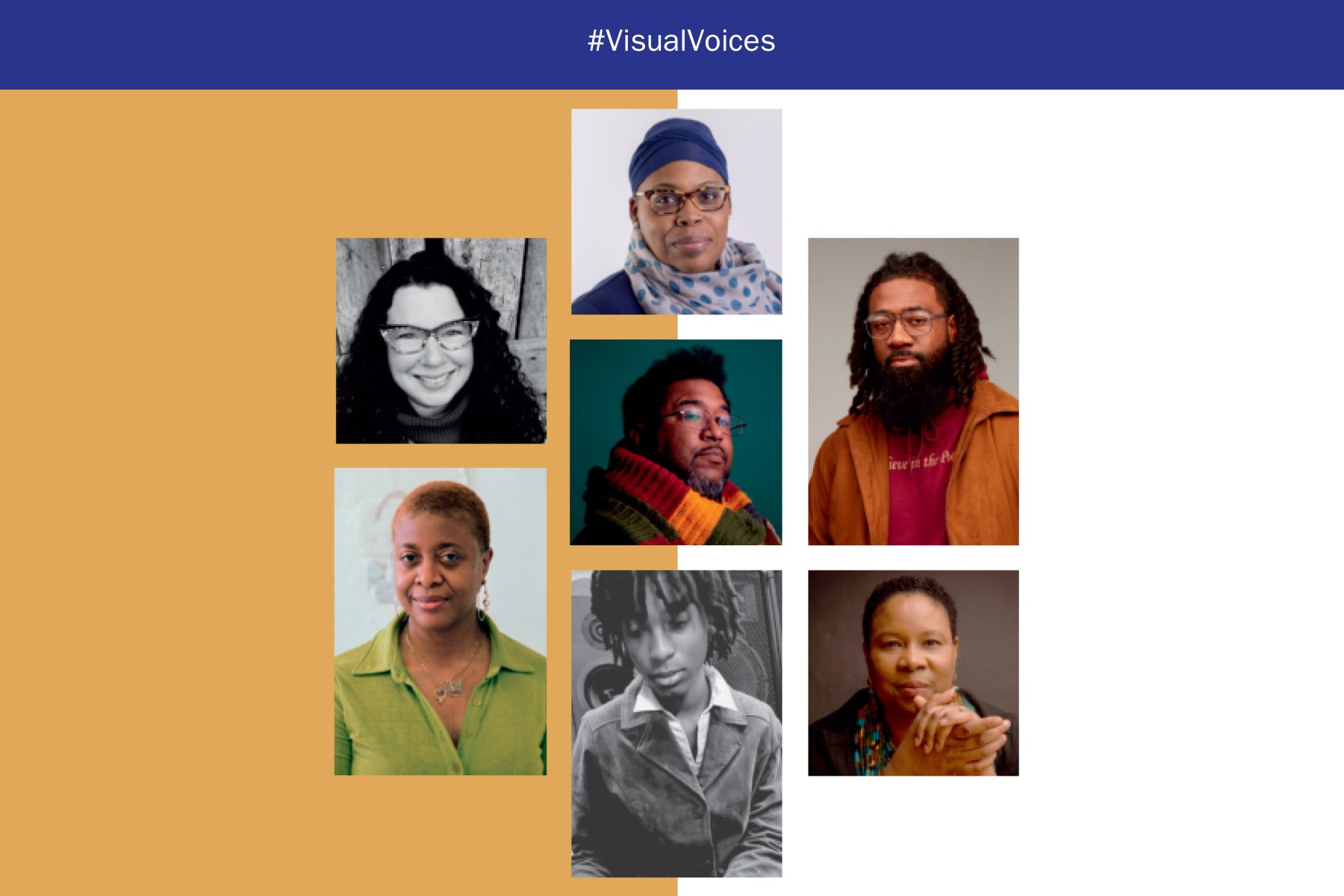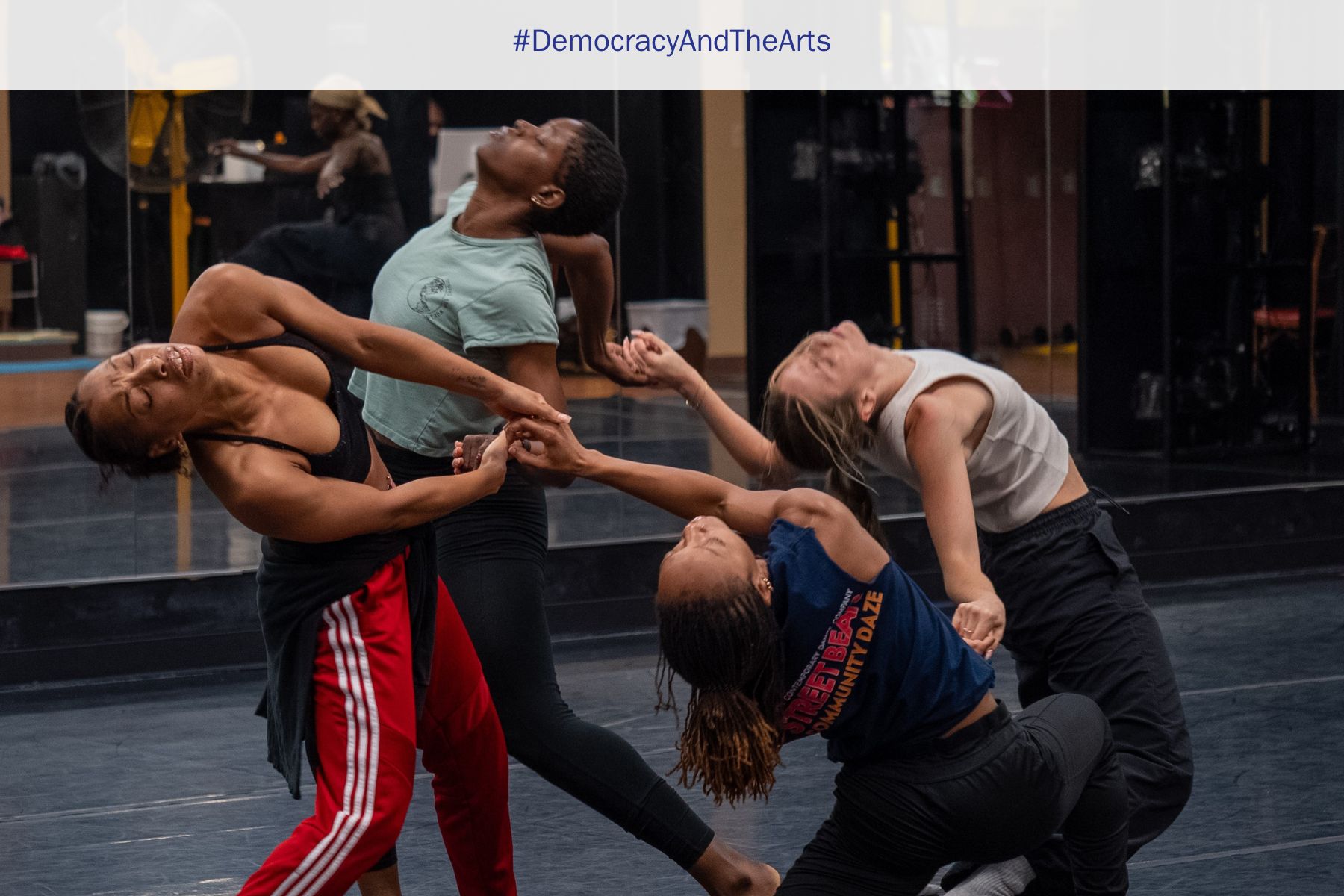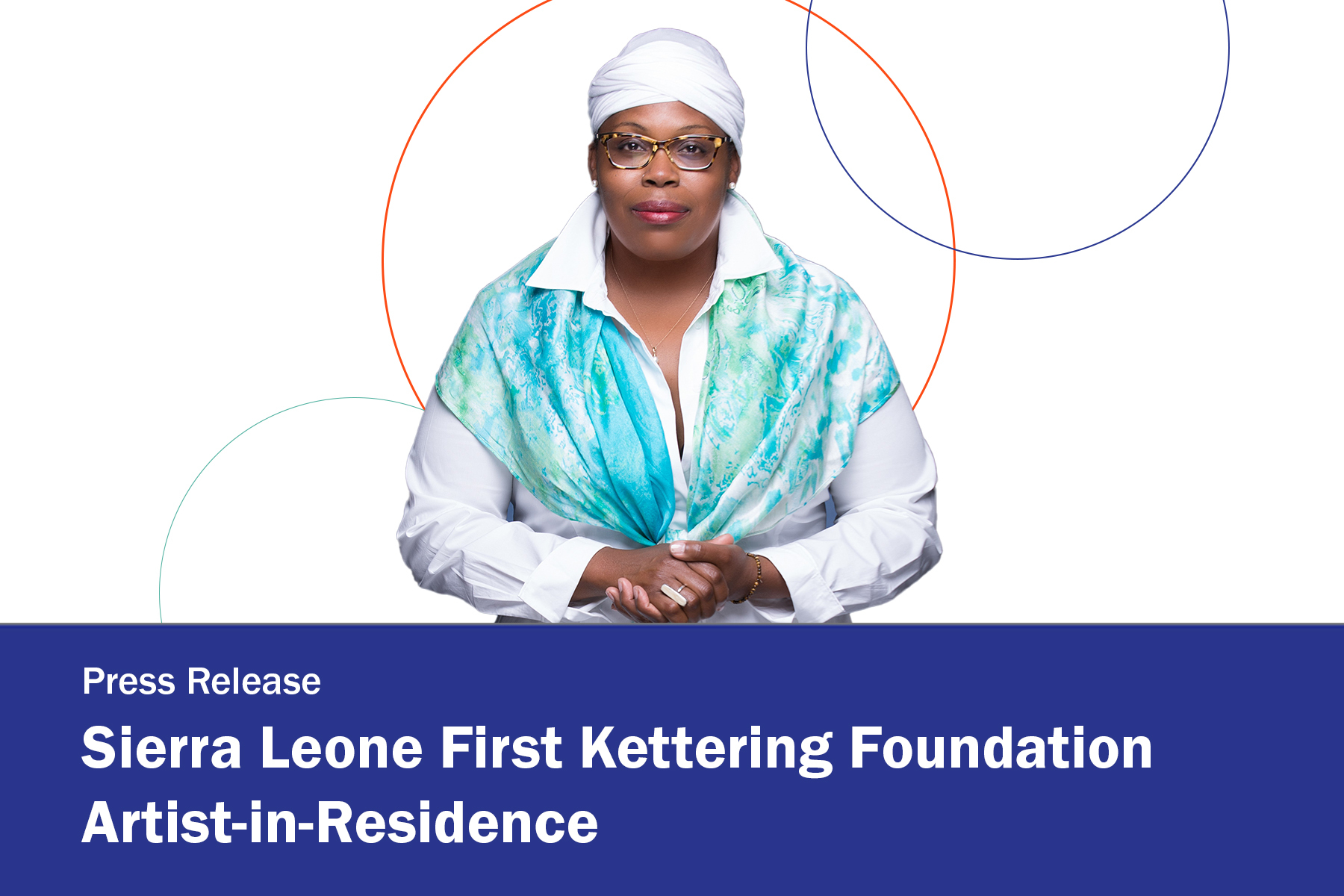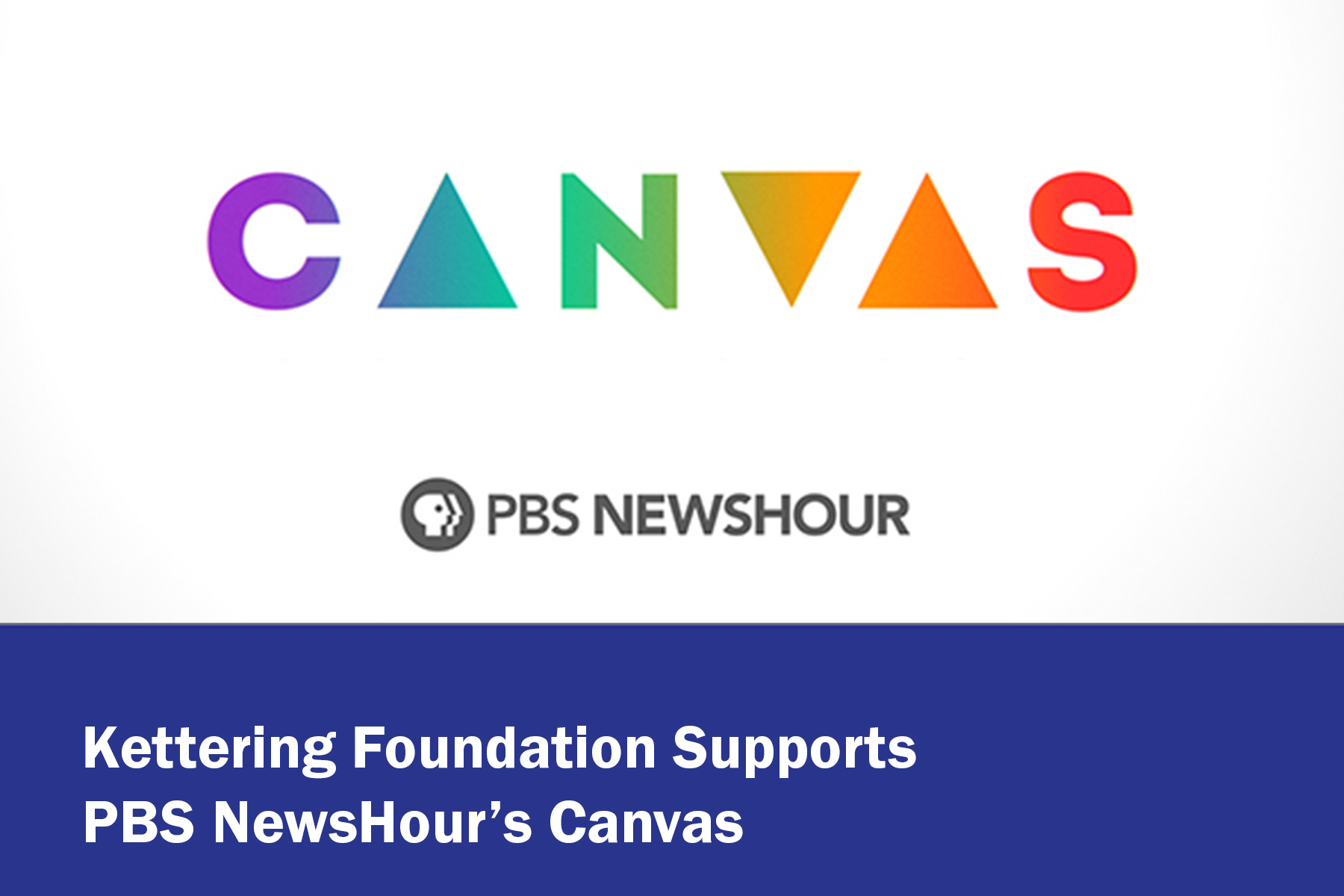Visual Voices: “We Have a Long, Long Way to Go”

Translations help us to understand each other. Ekphrastic poetry can be understood as a form of translation: the translating of visual language into words. (Ekphrasis is the Greek word for description, and it has come to mean a commentary on a visual work of art.) It’s a dialogue between a poet and a work of art. Visual Voices: Storytelling Through Poetry, just published by the Kettering Foundation, is an anthology of ekphrastic poetry by seven Ohio poets responding to artworks in the exhibition Visual Voices: An Exhibition by African American Artists Inspired by Dr. Martin Luther King Jr.’s 1964 Dayton Speech. Earlier this year, the poets shared their work at a spoken-word event at the Black Palette Art Gallery. Videos of the poets performing their work can be seen here, along with brief interviews.
The African American artists in that exhibition, curated by artist and activist Willis “Bing” Davis, were also involved with translation as they responded to a speech given by Dr. Martin Luther King Jr. in Dayton in November 1964. In their creative works, the visual artists and poets express memories of personal or community trauma, questions and critiques about the continuing legacy of racism, the struggle to be recognized as human beings. In his Dayton speech, Dr. King opened with, “We’ve come a long, long way, but we have a long, long way to go.” He repeated that statement 19 times. The visual art and poetry convey narratives that explore that theme. Davis describes these artists as “griots, visual story tellers who have the creative ability and artistic skills to help the viewer see, feel, and think beyond the surface of things.”
The long history of ekphrastic poetry dates back to Homer’s Iliad. Since then, it has been continuously adapted to address the needs of the contemporary moment. For Homer, it was a way of celebrating a warrior ethos. In her essay, “The Art of Ekphrasis,” Julia Press Simmons writes, ekphrasis is “about contextualizing and reclaiming. It’s about seeing themselves [Black artists]—often historically erased from galleries and museums—reflected, imagined, or defiantly inserted into the artistic canon.” She explains, “within the Black aesthetic, ekphrasis takes on a distinct and powerful resonance: it becomes not just an artistic dialogue, but an act of cultural reclamation, reimagining, and affirmation.”
Simmons describes how Black poets use this form of writing to recenter and reclaim narratives, challenge dominant histories, and “affirm the beauty, dignity, and complexity of Black life” through “telling stories from within rather than from outside.” As evident in the Visual Voices anthology, ekphrasis is a lyrical and powerful way of drawing attention to the historic and contemporary dilemmas sparked by racism and its devastating impact on human beings.
In his artist statement, Leroy D. Bean notes that his poem, like many in this anthology, captures “the distinct struggles of individual generations and the shared intergenerational journey toward liberation.” In “When Art Speaks, Portals Open,” a poem written in response to James Pate’s portrait, Winter Suit, he asks,
You ever look at art
and see yourself?
Later, in the same poem, he reflects,
So many things to unpack
along the road from chattel to Child of God
but this divine lighting
says “A change gone come.”
In “We Flower,” a poem written in response to the digital dual portrait of Dr. King and Trayvon Martin by Kevin Harris, Furaha Henry-Jones asks,
Who is the danger?
Who is in danger?
In another verse, she writes,
I look at them and see eyes layered upon eyes,
eyes layered upon eyes, I
look at them and at just the right angle,
I see myself, an apparition, a shadow
wondering on which side of the
sawtooth path between the physical
and ethereal worlds am I standing?
Are they pleading with me, Mama?
Are they pleading with me, Mama?
Are they pleading with me, Mama?
Or are they challenging us across time, across the veil to STOP.
To STOP pretending like we don’t know the answers to the questions.
A poem by Sierra Leone, Kettering’s artist-in-residence, affirms what Simmons described as “the beauty, dignity, and complexity of Black life.” Leone, the curator of the Visual Voices poetry project, wrote the poem “American Libation: Homage to an Elder,” a celebration of the life of the art exhibition’s curator, Bing Davis. In the poem, Leone, Dayton’s current poet laureate, quotes Paul Laurence Dunbar, Dayton’s first poet laureate, as she honors both Dunbar and Davis:
Griot, is that jazz in your fingertips?
fingers, swinging like church robes on a Sunday morning.
prayer, protest, praise,
rooted like baobab trees
oak and ivy
“Jump back, honey,
jump back.”
you; balm of Gilead on the Westside of Dayton
venerating scared and lamented souls
Calling their names; grounding your sacrifice
with Nkondi nails, chanting Àșe offerings.
The poems in this anthology demonstrate how the centuries-old tradition of ekphrastic poetry continues to be a lyrical, yet powerful, way of creatively addressing pressing contemporary political and social issues as we seek to realize the ideal of inclusive democracy.
Today, in honor of Juneteenth, we are partnering with the Levitt Pavilion Dayton for a concert and Legacy of Freedom program curated by Sierra Leone. Several poets in this anthology will be performing their poems, and the anthology will be shared with attendees. To receive a copy of the Visual Voices exhibition catalog or the Visual Voices poetry anthology, please email us at democracyandthearts@kettering.org.
Joni Doherty is senior program officer for Democracy and the Arts at the Kettering Foundation.







